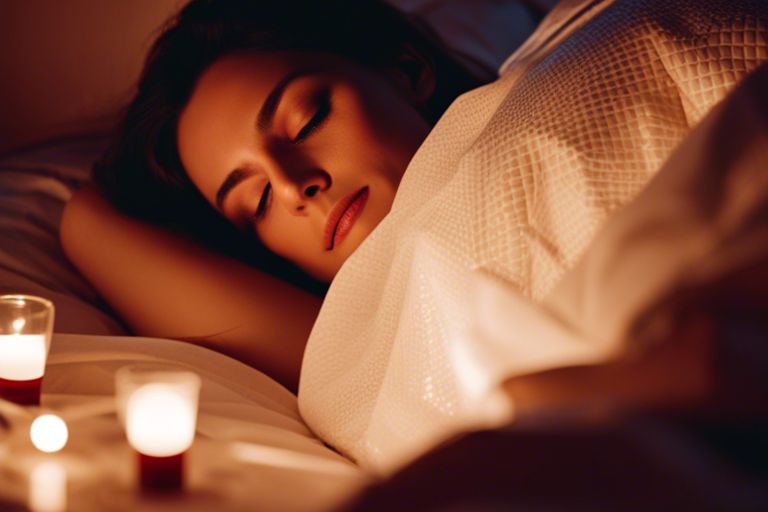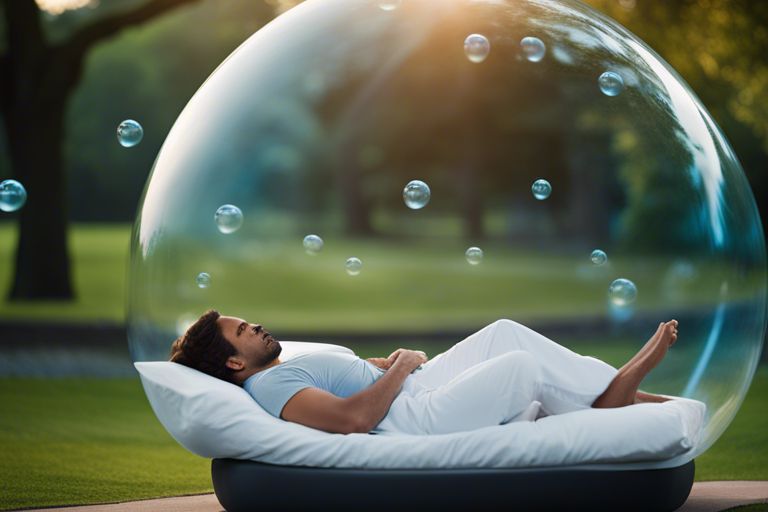Hypnagogic hallucinations, vivid sensory experiences that occur during the transition from wakefulness to sleep, are often associated with certain sleep disorders. These hallucinations can be experienced visually, auditorily, or even tactilely, and are commonly linked to conditions like narcolepsy, sleep paralysis, and insomnia. Understanding the connection between hypnagogic hallucinations and sleep disorders is crucial in managing and treating these conditions effectively. In this blog post, we will investigate into the intricacies of this relationship and explore how it impacts the quality of sleep and overall well-being of individuals experiencing these phenomena.
Key Takeaways:
- Sleep disorders such as narcolepsy, insomnia, and sleep apnea can be linked to hypnagogic hallucinations.
- Hypnagogic hallucinations are vivid sensory experiences that occur during the transition from wakefulness to sleep.
- People experiencing hypnagogic hallucinations may see, hear, feel, or even smell things that are not present in reality.
- Factors like stress, anxiety, and sleep deprivation can trigger or exacerbate hypnagogic hallucinations.
- Proper sleep hygiene practices, such as maintaining a consistent sleep schedule and creating a relaxing bedtime routine, can help reduce the occurrence of hypnagogic hallucinations.
- If hypnagogic hallucinations significantly disrupt sleep or daily functioning, seeking help from a healthcare professional or sleep specialist is recommended.
- Treatment options for hypnagogic hallucinations may include improving sleep habits, managing stress, and in some cases, medication or therapy.

The Nature of Hypnagogic Hallucinations
Definition and Characteristics
Even before venturing into the intricate relationship between sleep disorders and hypnagogic hallucinations, it is crucial to understand the nature of these hallucinations. An essential aspect of hypnagogic hallucinations is that they occur during the transitional state between wakefulness and sleep. These sensory experiences involve vivid and often bizarre perceptual phenomena that can encompass visual, auditory, tactile, olfactory, or even kinetic sensations.
An individual experiencing a hypnagogic hallucination may see fleeting images, hear sounds that aren’t there, feel like they are floating, or sense a presence in the room. These hallucinations can be intense and realistic, causing confusion and distress for the person experiencing them.
The Hypnagogic State: Between Wakefulness and Sleep
To further comprehend hypnagogic hallucinations, it is essential to explore the hypnagogic state, the transitional phase between wakefulness and sleep where these phenomena occur. During this period, the brain is in a unique state of flux, with the waking consciousness gradually giving way to sleep. This transitional zone is characterized by altered brain activity, including an increase in theta brain waves and decreased alpha and beta waves.
The hypnagogic state is a fascinating realm where the boundaries between dreams and reality blur, allowing for the manifestation of hallucinatory experiences. It is a time when the mind is untethered from external stimuli, leading to the emergence of vivid sensory perceptions that may feel incredibly real to the individual undergoing them.
Sleep Disorders and Their Relation to Hypnagogic Hallucinations
Now, let’s explore into the intriguing link between sleep disorders and hypnagogic hallucinations. These hallucinations are vivid sensory experiences that occur during the transition from wakefulness to sleep, known as the hypnagogic state. Understanding the relationship between sleep disorders and hypnagogic hallucinations can provide valuable insights into the complexities of the human sleep cycle.
Common Sleep Disorders Linked to Hallucinations
With several sleep disorders being associated with hypnagogic hallucinations, it is essential to explore this connection further. Sleep paralysis, narcolepsy, and insomnia are some of the most commonly reported disorders linked to hypnagogic hallucinations. Individuals with these disorders may experience intense visual, auditory, or tactile hallucinations when falling asleep or waking up.
Moreover, individuals suffering from sleep apnea, restless legs syndrome, and other sleep-related movement disorders have also reported instances of hypnagogic hallucinations. These experiences can be distressing and disruptive, impacting the individual’s overall quality of sleep and daily functioning.
Mechanisms Underlying the Connection
The intricate mechanisms underlying the connection between sleep disorders and hypnagogic hallucinations involve disruptions in the sleep cycle and the brain’s transition between different stages of sleep. The hypnagogic state is characterized by increased brain activity, similar to periods of rapid eye movement (REM) sleep, where dreams occur.
The brain’s inability to smoothly transition between wakefulness and sleep phases can lead to fragmented sleep patterns, contributing to the occurrence of hallucinations. Additionally, neurotransmitter imbalances, such as low levels of serotonin or dopamine, have been linked to both sleep disorders and hallucinations, further highlighting the complex interplay between these phenomena.
Managing and Treating Symptoms
Approaches to Addressing Sleep Disorders
Treating sleep disorders is crucial in managing hypnagogic hallucinations. One of the primary approaches is cognitive-behavioral therapy for insomnia (CBT-I), which aims to improve sleep quality and quantity by addressing unhealthy sleep habits and promoting relaxation techniques. Medications such as sedatives or antidepressants may also be prescribed by healthcare professionals to regulate sleep patterns and reduce hallucinations.
Additionally, creating a sleep-conducive environment by maintaining a regular bedtime routine, avoiding stimulants like caffeine before sleep, and ensuring a comfortable sleeping space can greatly help in improving sleep quality and reducing the frequency of hypnagogic hallucinations.
Strategies for Coping with Hypnagogic Hallucinations
With hypnagogic hallucinations, it is essential to stay calm during an episode. Relaxation techniques such as deep breathing exercises or visualization can help in managing the fear or anxiety that may accompany these hallucinations. Distraction methods like listening to calming music or keeping a dim night light can also aid in reducing the intensity of hallucinations.
It is important to note that seeking support from a mental health professional can provide guidance and coping strategies tailored to individual needs. Additionally, joining support groups or engaging in relaxation therapies like mindfulness meditation may offer further support in dealing with hypnagogic hallucinations.
It is crucial to remember that addressing both sleep disorders and hypnagogic hallucinations requires a comprehensive approach that combines professional guidance, healthy sleep habits, and coping strategies to effectively manage symptoms and improve overall quality of life.
To wrap up
On the whole, sleep disorders like narcolepsy and insomnia have been linked to the occurrence of hypnagogic hallucinations during the transition from wakefulness to sleep. These hallucinations can be unsettling and disruptive to sleep patterns, impacting the quality of rest. Understanding the connection between sleep disorders and hypnagogic hallucinations can help individuals and healthcare professionals address these issues and develop targeted treatment strategies to improve sleep quality and overall well-being. Seeking medical advice for persistent or troubling symptoms is essential to effectively manage and address sleep disorders and associated hallucinations.
FAQ
Q: What are hypnagogic hallucinations?
A: Hypnagogic hallucinations are vivid, dream-like experiences that occur as you are falling asleep. They can involve seeing, hearing, or feeling things that are not real.
Q: What is the link between sleep disorders and hypnagogic hallucinations?
A: Hypnagogic hallucinations are often associated with sleep disorders such as narcolepsy, insomnia, and sleep apnea. These conditions can disrupt the normal sleep cycle and increase the likelihood of experiencing hypnagogic hallucinations.
Q: How common are hypnagogic hallucinations?
A: Hypnagogic hallucinations are relatively common, with studies suggesting that up to 37% of the population may experience them at some point in their lives. They are more prevalent in individuals with sleep disorders.
Q: Can hypnagogic hallucinations be treated?
A: Treatment for hypnagogic hallucinations often involves addressing any underlying sleep disorders. In some cases, medications or therapy may be recommended to help manage symptoms and improve sleep quality.
Q: Should I be concerned if I experience hypnagogic hallucinations?
A: While hypnagogic hallucinations can be unsettling, they are usually not a cause for concern. However, if they occur frequently and interfere with your ability to function during the day, it is important to consult with a healthcare professional for further evaluation and guidance.



